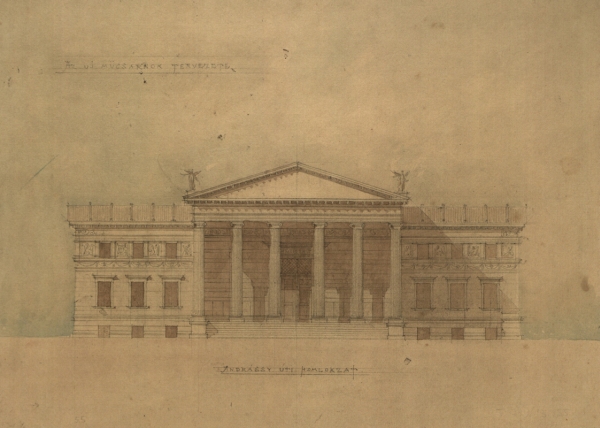…and the idea takes shape…
Albert Schickedanz, Builder of the M┼▒csarnok
Kunsthalle, Budapest, 5 September 2015 – 18 October 2015

The twentieth of July this year marks the centenary of the death of the architect of HeroesŌĆÖ Square, and next year we celebrate the 120th anniversary of the building of M┼▒csarnok. These two important dates present the opportunity to host an exhibition of SCHICKEDANZŌĆÖS original plans and watercolours in the former ceremonial hall.
Curator: Brigitta Muladi, ├ügnes Madar├Īsz
Vernissage: 9 September 2015, 6 p.m.
Opening speech: Mih├Īly Rudolf DLA architect
The M┼▒csarnok and the Millennium Memorial were the joint concept of Albert Schickedanz and sculptor Gy├Črgy Zala (whose exhibition is currently running at the M┼▒csarnok). Both projects were completed by 1896 for the events celebrating the millennium of the MagyarsŌĆÖ arrival in the Carpathian Basin (although all of the sculptures were not fully installed until 1929). Andr├Īssy ├║t, the avenue completing the CastleŌĆōChain Bridge axis, was an ideal setting for a ceremonial promenade. The M┼▒csarnok was to become an important venue among the Hungarian bourgeoisie that had been given a new lease of life after the Reform era. An incredible feat in both intellectual and practical terms, the planning and building of HeroesŌĆÖ Square, the M┼▒csarnok and the Museum of Fine Arts were the climax of a dazzling career. How Schickedanz, a modest but versatile master builder, found himself in the prime of his life at the helm of a megaproject (that would have been a test of any celebrity architectŌĆÖs mettle) in his newly-founded company, the elegant-sounding Schickedanz-Herzog Architects, can be explained by his relentless pursuit of perfection evident from his previous work. The success of his buildings and spaces undoubtedly lies in their sacred and spiritual character, largely due to SchickedanzŌĆÖs generous treatment of space and mass, his sense of detail, respect for tradition, knowledge of new materials and techniques and, not least, a monastic dedication to his job. Albert Schickedanz was born into a family of Saxon descent in 1846 in Bielsko Biala, a small town in Silesia, then part of the Habsburg Empire. The family moved to K├®sm├Īrk [today Kezmarok, Slovakia] in 1848 and were living in Tokaj at the time of the 1867 Compromise. In spite of his German origins, SchickedanzŌĆÖs father had fought in the 1848ŌĆō1849 war of independence, for which he was even sentenced to prison in a castle. Albert Schickedanz began his studies in 1865 at the Politechnische Schule in Karlsruhe, but was forced to take on a job due to the familyŌĆÖs financial circumstances. He first worked for Karl Tietz Architects in Vienna, but moved to Pest in 1858 and served as a draughtsman in Mikl├│s YblŌĆÖs office for over ten years while taking on design jobs for other architects too. He learnt to paint in the studios of K├Īroly Lotz and Bertalan Sz├®kely, which he made good use of in YblŌĆÖs office. He produced numerous watercolours to illustrate the plans of buildings they were working on.
